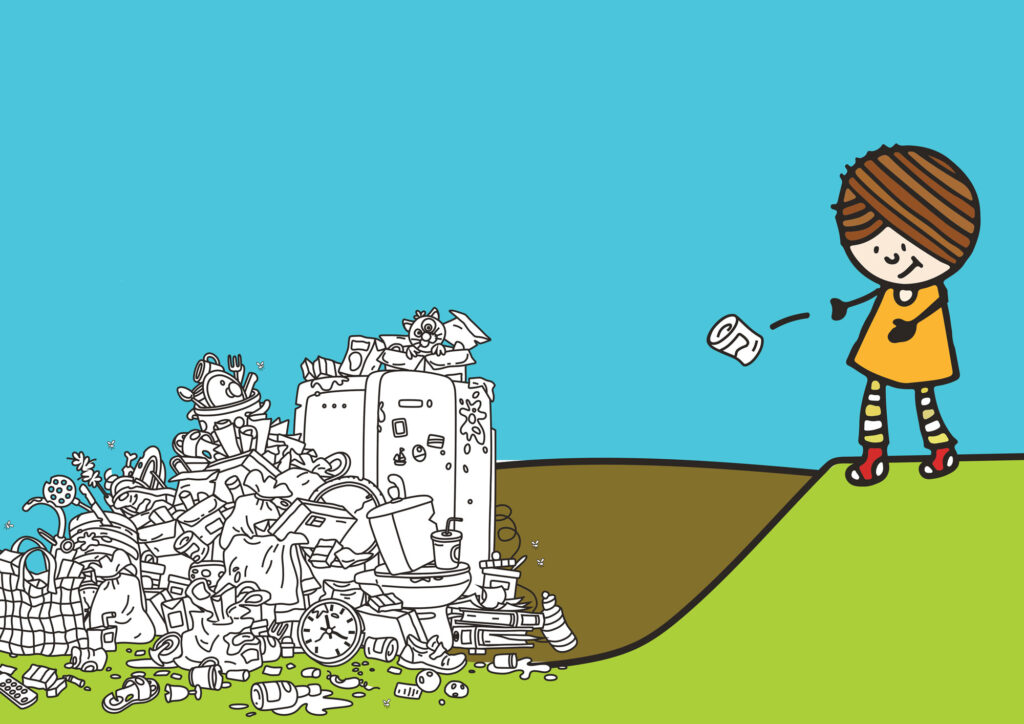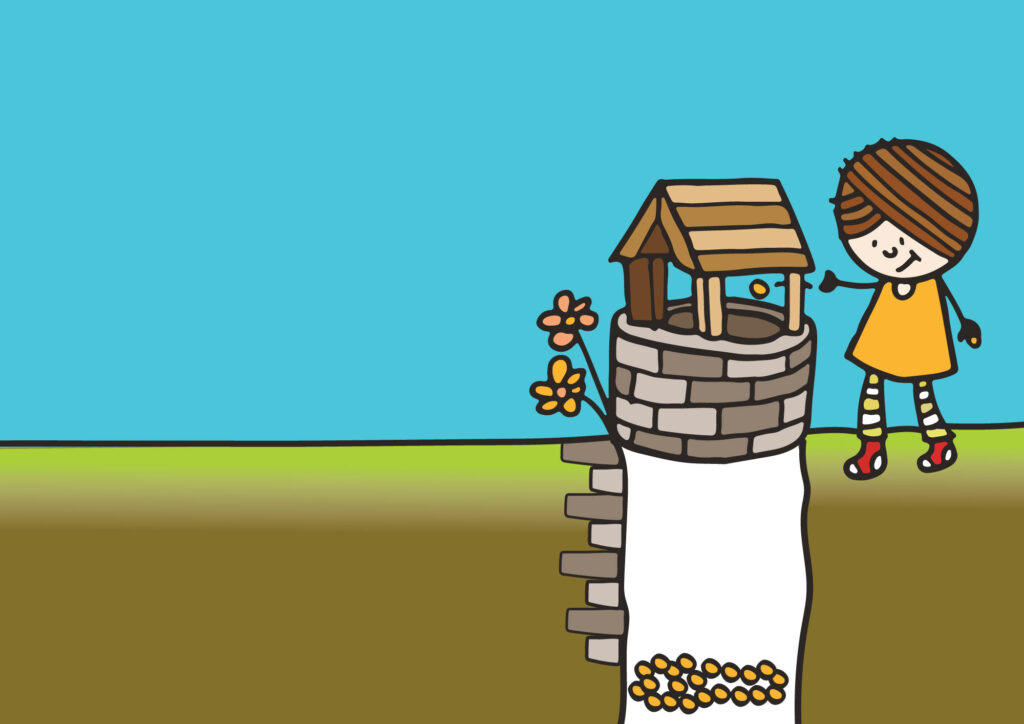Structured deposition is a term that archaeologists use to describe material (artefacts and dirt) when it is deposited in a particular type of feature or place in a pattern or order that has been observed before. This allows them to suggest that certain human behaviours dictated the choice of location and created the pattern or order that was observed.
To understand this better, let’s first consider a deposit that is not structured. If you threw everyday rubbish into a hole, the material would be mixed up and there would be no order, other than a jumble of randomly placed waste material with little or no monetary value. Archaeologists would correctly identify this as rubbish disposal.

Image showing Non-Structured Deposition.
Now let’s consider a deposit that does have structure. Have you ever thrown a coin into a fountain or well? If so, you are not alone. If an archaeologist excavated such a feature thousands of years from now, they would find a layer of coins concentrated in water-lain silt at the bottom, with dumped dirt on top (thrown in after the feature fell out of use). They might realise that this is a repeating pattern (of coins at the bottom and dirt on the top), if they dug more wells and fountains, or read about other excavated examples. They would also notice that the coins have value and probably do not represent rubbish. By making these observations, archaeologists can suggest that the coins were deposited in these places because of a belief, superstition or cultural practice other than rubbish disposal, and they would be correct.
People have been throwing metal objects into wells (and other watery places) since the prehistoric period, although the motivation behind this has no doubt changed over the years. This is just one example of a structured deposit- there are many other kinds.

Image showing Structured Deposition.
